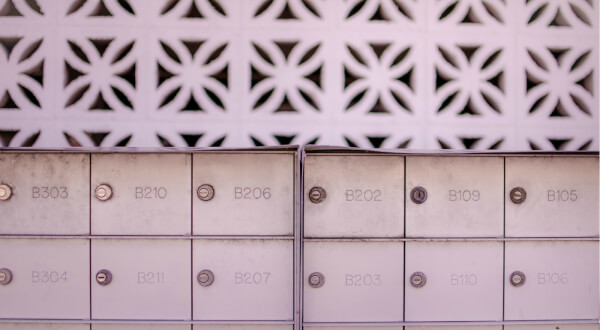Property taxes in Australia: Full guide for Americans
Want to learn about property taxes in Australia? This guide covers types of property taxes and how they are calculated to help you navigate the process.

Having a new baby brings joy and excitement. Along with the excitement, there’s bound to be stress. If you’re an expat and an expectant parent, you face a unique challenge. How will you navigate an unfamiliar health care system, and the medical expenses that are part of it?
More than 300,000 babies are born in Australia every year. And if you’re one of the lucky mothers or fathers expecting a baby down under this year, this article will help you understand the costs, from fertility treatments to average delivery costs.
An average of 1 in 8 couples worldwide struggles with getting pregnant. Adoption has also become more complicated and expensive, in many cases. But advancements in medical science mean that couples have options like in-vitro fertilisation (IVF) to help them conceive. In Australia, IVF is an option for couples having difficulty conceiving. If you’re looking into IVF how much should you be budgeting?
If you’re a foreigner on a tourist visa, you may not qualify to use Australia’s Medicare system, unless you’re from one of these 11 countries that have reciprocal agreements with Australia. Non-residents can access Australia’s healthcare system in case of emergency and if you have international insurance it should help keep costs down. Medical tourism isn’t as popular as it is in other countries in the world, but in 2013 it was reported that Australia attracted close to 10,000 medical tourists.
The local Australian currency is the Australian dollar. It’s written as AUD or A$ to distinguish from other dollar currencies. To find out what A$ are worth compared to your home currency, use a currency converter online.
| IVF fertility treatment in Australia | Average cost (AUD) |
|---|---|
| IVF process (total costs) | A$9,430 |
| Genetic testing (per embryo) | A$800 |
| Intracytoplasmic sperm injection (ICSI) | A$10,020 |
| Donor eggs or embryos | A$400-$1,700 |
| Frozen embryo transfer (FET) | A$3,540 |
| Embryo storage, yearly | A$820 |
The Australian Medicare system provides financial assistance for fertility treatments. There’s a Medicare rebate on fertility treatments, and the Medicare Safety Net program applies a A$2,056 threshold for out-of-pocket expenses for hospital and doctor fees.
You can visit these websites for more information:
Australia has a universal health care system. All permanent residents have access to public health care through Medicare. Approximately 50% of the population subsidizes their Medicare with additional private insurance.
Temporary visa holders may not qualify for Medicare. Australia has reciprocal agreements with 11 countries - including the United Kingdom - that provide subsidised essential health care treatment. However, if you’re not from these 11 places, invest in private insurance available to you so you don’t have to pay hospital fees out-of-pocket, because having a baby in Australia can be costly:
If you use a public hospital, fees will be lower. If you qualify for Medicare your costs will range from A$0-A$1,500. Additionally, those who qualify for Medicare will receive a rebate up to $2,056 to assist with other expenses. If you use a private hospital, fees could be higher and you should check with your insurance provider to see what expenses they cover.
If you’re a pregnant visitor in Australia, you can access care during your pregnancy, birth, and afterwards. But out-of-pocket costs associated with this depends on your visa status. Birth tourism isn’t that popular in Australia because of the high costs of having a baby there.
| Baby delivery medical procedures in Australia | Average cost with no insurance | Average cost with insurance or Medicare coverage/rebates |
|---|---|---|
| Prenatal doctor visit and care, per visit | A$75-A$150 | A$0 -A $50 |
| Prenatal ultrasound | A$60-A$280 | A$10 - A$200 |
| Birth and delivery in the hospital | A$7,000 | A$0 - A$4,775 |
| Cesarean section in the hospital | A$14,000 | A$0 - A$12,000 |
| Home birth and delivery with midwife | [A$3,000-A$5,000]https://wise.com/us/currency-converter/usd-to-aud-rate?amount=1) | A$1,000-A$3,000 |
The average stay in Australia for prenatal care and delivery are comparable to elsewhere in the world. If all goes according to plan, a new mom shouldn’t expect to be in the hospital for long.
To recover from a regular birth and delivery, a new mom will stay in the maternity ward anywhere from between 4 and 48 hours. If recovering from a C-section, a new mom will stay closer to 3 or 4 days.
Here are some items you might want to bring with you to the hospital for the birth of your baby:
When you have your baby in Australia you should have the following documents ready:
Each state or territory in Australia has a different process for registering a child’s birth. Check with the government office in your state. Parents usually complete a birth registration statement within 6 months of the birth. This is usually provided by the hospital along with your Parent Pack, which contains a Newborn Child Declaration. You should be able to apply for a copy of your child’s birth certificate when you submit the registration statement.
If you’re a foreign national, contact your embassy or consulate so you can register your birth with your home nation.
If you have a baby in Australia and at least one of the parents is an Australian citizen or permanent resident, that child is eligible for Australian citizenship. If your child is eligible for Australian citizenship, they can most likely hold dual citizenship -- so they don’t have to chose between nationalities.
Australia provides 18 weeks of paid parental leave that can be split between both parents, if they’re both eligible. To be eligible, you need to have worked for at least 330 hours in the 10 of the 13 months prior to the birth.
Expats live their lives between two countries, and managing money is part of the logistical hassle. But Wise can assist. When it comes to currency exchange, Wise offers consistent, low fees and the market value exchange rate money transfers.
And now Wise offers new borderless multi-currency accounts, which let you hold and manage money in dozens of different currencies, including the Australian dollar. The borderless account can transfer money to more than 50 countries, including Australia, and coming in 2018, it will have a consumer debit card attached for maximum convenience.
Australia offers many options for new parents, from IVF treatments to universal healthcare. This guide can help you understand the process for Australian labour and childbirth, so you can relax and enjoy your new addition.
*Please see terms of use and product availability for your region or visit Wise fees and pricing for the most up to date pricing and fee information.
This publication is provided for general information purposes and does not constitute legal, tax or other professional advice from Wise Payments Limited or its subsidiaries and its affiliates, and it is not intended as a substitute for obtaining advice from a financial advisor or any other professional.
We make no representations, warranties or guarantees, whether expressed or implied, that the content in the publication is accurate, complete or up to date.

Want to learn about property taxes in Australia? This guide covers types of property taxes and how they are calculated to help you navigate the process.

What are the best property management software systems for landlords in Australia? Take a look at our list and choose the most suitable option for you.

Everything you need to know about moving to Australia from the USA.

There are lots of people choosing to make their home in Australia. But having the right to live and work there isn’t the same as being an Australian citizen -...

The Land Down Under is a popular destination for tourists from all over the world, as well as expats. With bustling cities and stunning natural scenery, it’s...

There’s a lot that’s great about moving to Australia. And even though getting high-quality healthcare might not be quite as much fun as a day on Bondi Beach...